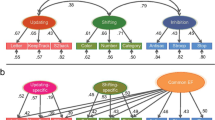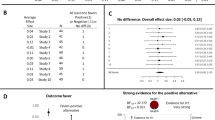Abstract
In the present study, brain activation associated with speech perception processing was examined across four groups of adult participants with age ranges between 20 and 65 years, using functional MRI (fMRI). Cognitive performance demonstrates that performance accuracy declines with age. fMRI results reveal that all four groups of participants activated the same brain areas. The same brain activation pattern was found in all activated areas (except for the right superior temporal gyrus and right middle temporal gyrus); brain activity was increased from group 1 (20–29 years) to group 2 (30–39 years). However, it decreased in group 3 (40–49 years) with further decreases in group 4 participants (50–65 years). Result also reveals that three brain areas (superior temporal gyrus, Heschl’s gyrus and cerebellum) showed changes in brain laterality in the older participants, akin to a shift from left-lateralized to right-lateralized activity. The onset of this change was different across brain areas. Based on these findings we suggest that, whereas all four groups of participants used the same areas in processing, the engagement and recruitment of those areas differ with age as the brain grows older. Findings are discussed in the context of corroborating evidence of neural changes with age.



Similar content being viewed by others
References
Grady CL, Maisog JM, Horwitz B, Ungerleider LG, Mentis MJ, Salerno JA et al (1994) Age-related changes in cortical blood flow activation during visual processing of faces and location. J Neurosci 14:1450–1462
Reuter-Lorenz PA, Cappell KA (2008) Neurocognitive aging and the compensation hypothesis. Curr Dir Psychol Sci 17(3):177–183
Salthouse TA (2009) When does age-related cognitive decline begin? Neurobiol Aging 30:507–514
Aine CJ, Adair JC, Knoefel JE, Hudson D, Qualls C, Kovacevic S, Woodruff CC, Cobb W, Padilla D, Lee RR, Stephen JM (2005) Temporal dynamics of age-related differences in auditory incidental verbal learning. Cogn Brain Res 24:1–18
Cabeza R, Anderson ND, Locantore JK, McIntosh AR (2002) Aging gracefully: compensatory brain activity in high-performing older adults. NeuroImage 17:1394–1402
Wingfield A, Grossman M (2006) Language and the aging brain: patterns of neural compensation revealed by functional brain imaging. J Neurophysiol 96:2830–2839
Wlotko EW, Lee CL, Federmeier KD (2010) Language of the aging brain: event-related potential studies of comprehension in older adults. Lang Linguist Compass 4:623–638
Dolcos F, Rice H, Cabeza R (2002) Hemispheric asymmetry and aging: right hemisphere decline or asymmetry reduction. Neurosci Biobehav Rev 26:819–825
Zatorre RJ, Evans AC, Meyer E, Gjedde A (1992) Lateralization of phonetic and pitch discrimination in speech processing. Sciences 256(5058):846–849
Butefisch CM, Kleiser R, Korber B, Muller K, Wittsack HJ, Homberg V, Seitz RJ (2005) Recruitment of contralateral motor cortex in stroke patient with recovery of hand function. Neurology 64:1067–1069
Tyler LK, Marslen-Wilson WD, Randall B, Wright P, Devereux BJ, Zhuang J, Papoutsi M, Stamatakis EA (2011) Left inferior frontal cortex and syntax: function, structure and behavioural in patients with left hemisphere damage. Brain 134:415–431
Gillard WD, Hertz-Pannier L, Mott SH, Bernett AS, LeBihan D, Theodore WH (2000) Functional anatomy of cognitive development: fMRI of verbal fluency in children and adults. Neurology 54:180–185
Gillard WD, Sachs BC, Whitnah JR, Ahmad Z, Balsamo LM, Petrella JR, Braniecki SH, McKinney CM, Hunter K et al (2003) Developmental aspects of language processing: fMRI of verbal fluency in children and adults. Hum Brain Mapp 18:176–185
Oldfield RC (1971) The assessment and analysis of handedness: the Edinburgh Inventory. Neuropsychologia 9:97–113
Folstein MF, Folstein SE, McHugh PR (1975) Mini-mental state. A practical method for grading the cognitive state of patient for clinician. J Psychiatry Res 12:189–198
Turner CW, Kwon BJ, Tanaka C, Knapp J, Hubbartt LJ, Doherty KA (2008) Frequency-weighting functions for broadband speech as estimated by a correlational method. J Acoust Soc Am 104(3):1580–1585
Hall AD, Haggard PM, Akeroyd Summerfield PR, Elliott Q, Gurney M, Bowtell RW (1999) “Sparse” temporal sampling in auditory fMRI. Human Brain Mapp 7:213–223
Manan HA, Franz EA, Yusoff AN, Mukari SZM (2012) Hippocampal-cerebellar involvement in enhancement of performance in word-based BRT with the presence of background noise: an initial fMRI study. Psychol Neurosci 5(2):247–256. doi:10.3922/j.psns.2012.2.16
Manan HA, Yusoff AN, Franz EA, Mukari SZM (2013) The effects of background noise on brain activity using speech stimuli on healthy young adults. Neurol Psychiatry Brain Res 19:207–215
Manan HA, Franz EA, Yusoff AN, Mukari SZM (2013) Age-related laterality shifts in auditory and attention networks with normal ageing: effects on a working memory task. Neurol Psychiatry Brain Res 19:180–191
Friston KJ, Holmes A, Poline JB, Price CJ, Frith CD (1996) Detecting activations in PET and fMRI: levels of inference and power. NeuroImage 40:223–235
Maldjian JA, Laurienti PJ, Kraft RA, Burdette JH (2003) An automated method for neuroanatomic and cytoarchitectonic atlas-based interrogation of fMRI data sets. NeuroImage 19:1233–1239
Segheir ML (2008) Laterality index in functional MRI: methodological Issues. Magn Reson Imaging 26:594–601
Buchsbaum BR, Hickok G, Humphries C (2001) Role of left posterior superior temporal gyrus in phonological processing for speech perception and production. Cogn Sci 25(5):663–678
Celsis P, Boulanouar K, Doyon P, Ranjeva JP, Berry I, Nespoulous JL, Chollet F (1999) Differential fMRI responses in the left posterior superior temporal gyrus and left supramarginal gyrus to habituation and change detection in syllables and tones. NeuroImage 9(1):135–144
Friederici AD, Ruschemeyer S, Hahne A, Fiebach CJ (2003) The role of left inferior frontal and superior temporal cortex in sentence comprehension: localizing syntactic and semantic processes. Cereb Cortex 13(2):170–177
Friederici AD (2011) The brain basis of language processing: from structure to function. Physiol Rev 91:1357–1392
Scott SK, Blank CC, Rosen S, Wise RJS (2000) Identification of a pathway for intelligible speech in the left temporal lobe. Brain A J Neurol 123(12):2400–2406
Demonet J, Chollet F, Ramsey S, Cardebat D, Nespoulous J, Wise R, Rascol A, Frackowiak R (1992) The anatomy of phonological and semantic processing in normal subjects. Brain A J Neurol 115(6):1753–1768
Friederici AD (2002) Towards a neural basis of auditory sentence processing. Trends Cogn Sci 6(2):78–84
Vigneau M, Beaucousin V, Herve PY, Duffau H, Crivello F, Houde O (2006) Meta-analyzing left hemisphere language areas: phonology, semantics, and sentence processing. NeuroImage 30(4):1414–1432
Booth JR, Wood L, Lu D, Houk JC, Bitan T (2007) The roles of the basal ganglia and cerebellum in language processing. Brain Res 1133:136–144
Desmond JE, Fiez JA (1998) Neuroimaging studies of the cerebellum: language, learning and memory. Trends Cogn Sci 2(9):355–362
Just MA, Carpenter PA, Keller TA, Eddy WF, Thulborn KR (1996) Brain activation modulated by sentence comprehension. Science 274:114–116
Frost JA, Binder JR, Springer JA, Hammeke TA, Bellgowan PSF, Rao SM, Cox RW (1998) Language processing is strongly left lateralized in both sexes. Evidence from functional MRI. Brain A J Neurol 122(2):199–208
Mitchell KJ, Johnson MK, Raye CL, D’Esposito M (2000) fMRI evidence of age-related hippocampal dysfunction in feature binding in working memory. Cogn Brain Res 10(1):197–206
Smith EE, Gewa A, Jonides J, Miller A, Reuter-Lorenz P, Koeppe RA (2000) The neural basis of task-switching in working memory: effects of performance and aging. Proc Natl Acad Sci USA 98:2095–2100
Cabeza R, Dennis NA (2012) Frontal lobes and aging; deterioration and compensation. In: Stuss DT, Knight RT (eds) Principles of frontal lobe function, 2nd edn. Oxford University Press, Oxford, pp 628–652
Salthouse TA (2012) Does the direction and magnitude of cognitive change depend on initial level of ability? Intelligence 40:352–361
Reuter-Lorenz PA, Sylvester CYC, Cabeza R, Nyberg L, Park D (2005) The cognitive neuroscience of working memory and aging. In: Cognitive neuroscience of aging: linking cognitive and cerebral aging. Oxford University Press, New York, pp 186–121
Cabeza R, Nyberg L (2000) Imaging cognition II: an empirical review of 275 PET and fMRI studies. J Cogn Neurosci 12:1–47
Balsamo LM, Benjamin MA, Cecile BG, Jeffrey RP, Braniecki SH, Elliott TK, Gaillard DW (2002) A functional magnetic resonance imaging study of left hemisphere language dominance in children. JAMA Neurol 59(7):1168–1174
Sommer IEC, Ramsey NF, Kahn RS (2001) Language lateralization in schizophrenia, an fMRI study. Schizophrenia Res 52:57–67
Cabeza R (2001) Cognitive neuroscience of aging: contributions of functional neuroimaging. Scand J Psychol 42:277–286
Cabeza R, Nyberg L, Park D (2005) Cognitive neuroscience of aging: linking cognitive and cerebral aging. Oxford University Press, New York
Kemper S (2000) Over- and under-accommodations to aging. In: Charness N, Parks DC, Sabel BA (eds) Communication, technology, and aging. Springer, Doylestown
Kemper S, Sumner A (2001) The structure of verbal abilities in young and older adults. Psychol Aging 16:312–322
Kemper S, Thompson M, Marquis J (2001) Longitudinal change in language production: effects of aging and dementia on grammatical complexity and propositional content. Psychol Aging 16:600–614
Kemper S, Herman RE, Lian CHT (2003) The costs of doing two things at once for young and older adults: talking while walking, finger tapping, and ignoring speech or noise. Psychol Aging 18:181–192
Kemper S, Herman RE, Nartowicz J (2005) Different effects of dual task demands on the speech of young and older adults. Aging Neuropsychol Cogn 12:340–358
Kemper S, McDowd J, Pohl P, Herman R, Jackson S (2006) Revealing language deficits following stroke: the cost of doing two things at once. Aging Neuropsychol Cogn 13:115–139
Banich MT (1998) The missing link: the role of interhemispheric interaction in attentional processing. Brain Cogn 36:128–157
Acknowledgments
We thank Sa’don Samian from Department of Radiology, Universiti Kebangsaan Malaysia Medical Centre, for the assistance in fMRI scans. We also thank Mohammad Hairol Isa from Jabatan Kesihatan Masyarakat Universiti Kebangsaan Medical Centre, for his help on managing older participants. We also thank Noorazrul Azmie Yahya from Diagnostic Imaging and Radiotherapy Program, School of Diagnostic and Applied Health Sciences, for his ideas, and insight. This work is supported by the Research University Grant UKM GUP-SK-07-020-205.
Conflict of interest
The author certify that there is no actual or potential conflict of interest in relation to this article.
Author information
Authors and Affiliations
Corresponding author
Rights and permissions
About this article
Cite this article
Manan, H.A., Franz, E.A., Yusoff, A.N. et al. The effects of aging on the brain activation pattern during a speech perception task: an fMRI study. Aging Clin Exp Res 27, 27–36 (2015). https://doi.org/10.1007/s40520-014-0240-0
Received:
Accepted:
Published:
Issue Date:
DOI: https://doi.org/10.1007/s40520-014-0240-0




